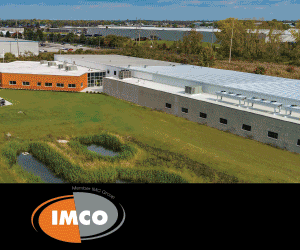Gear milling is usually performed with a hob dedicated to a specific gear module. Efficiently and economically producing small to medium batches of gears that each have different modules, therefore, is a challenge, according to Nicklas Bylund, senior research engineer for Sandvik Coromant.
In response to this, the toolmaker developed InvoMilling tools and a patent-pending technique to produce spur and helical gears with indexable-insert cutters in multitask machines. The technique provides flexibility when making gears by enabling a range of module sizes, such as modules 4 to 8, to be machined using one disc-type cutter tooled with standard carbide indexable inserts.


Sandvik Coromant’s InvoMilling gear-making technology allows one cutter tooled with standard indexable inserts to produce a range of module sizes. Images courtesy Sandvik Coromant.
Another benefit of InvoMilling is the ability to machine a part complete in only a few setups—ideally one—to improve quality and reduce cost, Bylund noted. This is achieved by using 5-axis mill/turn machines for producing parts with integrated gearing, as well as stand-alone gears.
Tools are available for producing modules 2 to 16 but most applications fall within a smaller range. “Our starting focus is between modules 3 and 8,” Bylund said.

The steps for cutting a tooth space with the InvoMilling process. Illustration courtesy Sandvik Coromant.
InvoMilling is targeted for prototyping and producing small to medium batches, while hobs, especially ones that accept carbide inserts, are more productive and suitable for larger runs. The appropriate part quantity depends on part complexity, which might include a key slot, holes and threads in addition to integrated gearing. “What you would lose in the gear cycle, you could potentially make up by doing everything in the same setup,” Bylund said.
When InvoMilling a tooth space of an outer spur gear, for example, a groove is first axially milled. The workpiece then slightly rotates as the cutter plunges for the final two cuts. The process can impart a surface finish as fine as 2µm Rz from root to tip and produce a DIN 6-class gear, the company reports. Similar to hobbing, a gear is heat treated after InvoMilling before finish grinding.
In addition to the cutters and a precise multitask machine, users require software to execute the technique. Bylund noted that, with support from Sandvik Coromant, DMG/Mori Seiki has introduced InvoMilling into its Mori-AP software, which uses the usual gear parameters as input and creates the program for cutting the teeth. The machine tool builder is licensed to use the InvoMilling method, which is performed dry, for implementation on its 5-axis mill/turn machines, such as the NT series.
For more information on InvoMilling, contact Sandvik Coromant Co., Fair Lawn, N.J., at (800) SANDVIK, www.sandvik.coromant.com/us or nicklas.bylund@sandvik.com.
Related Glossary Terms
- gang cutting ( milling)
gang cutting ( milling)
Machining with several cutters mounted on a single arbor, generally for simultaneous cutting.
- grinding
grinding
Machining operation in which material is removed from the workpiece by a powered abrasive wheel, stone, belt, paste, sheet, compound, slurry, etc. Takes various forms: surface grinding (creates flat and/or squared surfaces); cylindrical grinding (for external cylindrical and tapered shapes, fillets, undercuts, etc.); centerless grinding; chamfering; thread and form grinding; tool and cutter grinding; offhand grinding; lapping and polishing (grinding with extremely fine grits to create ultrasmooth surfaces); honing; and disc grinding.
- milling
milling
Machining operation in which metal or other material is removed by applying power to a rotating cutter. In vertical milling, the cutting tool is mounted vertically on the spindle. In horizontal milling, the cutting tool is mounted horizontally, either directly on the spindle or on an arbor. Horizontal milling is further broken down into conventional milling, where the cutter rotates opposite the direction of feed, or “up” into the workpiece; and climb milling, where the cutter rotates in the direction of feed, or “down” into the workpiece. Milling operations include plane or surface milling, endmilling, facemilling, angle milling, form milling and profiling.


 ARTICLES
ARTICLES



